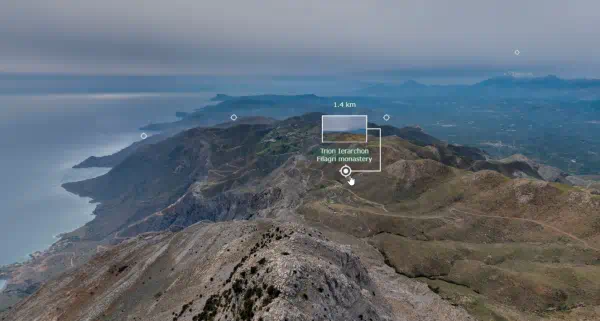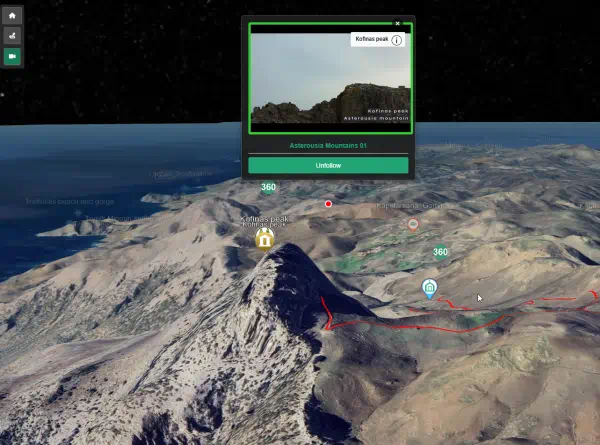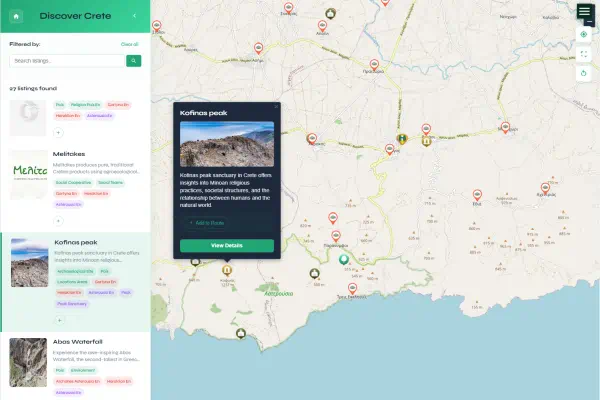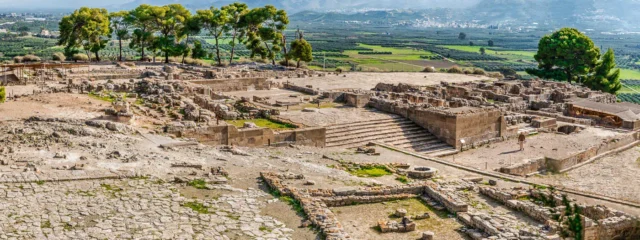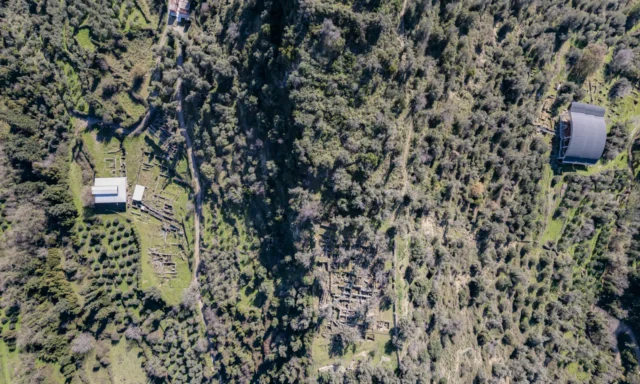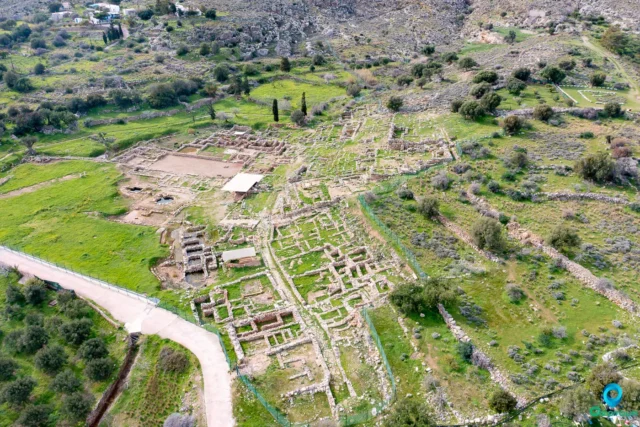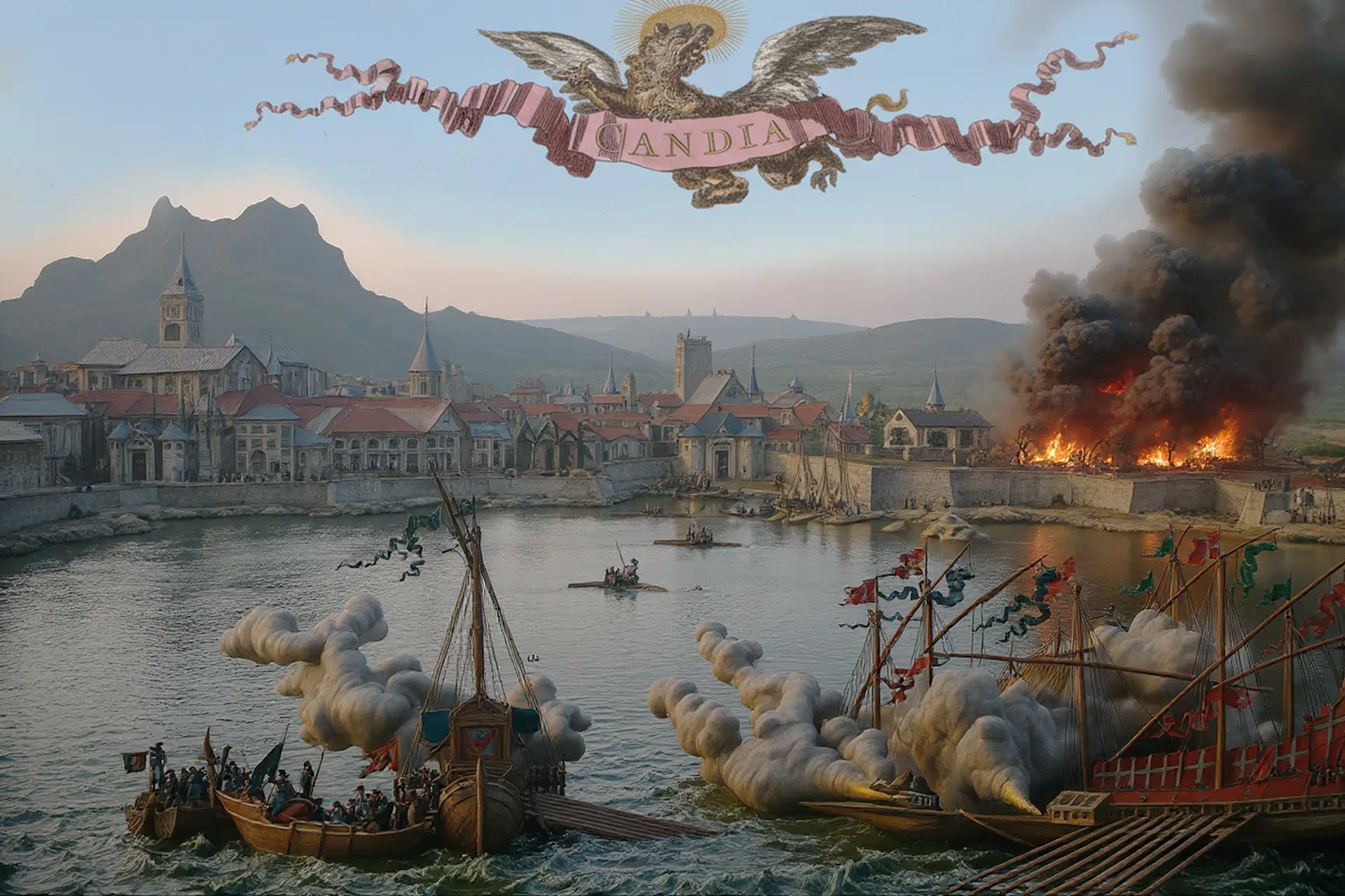The Siege of Candia stands as one of the most protracted and brutal military confrontations in early modern history. Lasting 21 years, from 1648 to 1669, it was the climactic episode of the Cretan War (1645-1669) between the Republic of Venice and the Ottoman Empire. The struggle for Candia (modern Heraklion), the capital of the Venetian Regno di Candia, became a focal point of Christian-Muslim conflict, drawing participants from across Europe and costing both empires immense resources in blood and treasure. This report provides a definitive account of the siege, examining its causes, the major phases of the conflict, the critical role of the city’s monumental fortifications, and its lasting geopolitical consequences.
Timeline of Major Events during the Cretan War and Siege of Candia (1645-1669)
Year | Event |
1645 | Galleys of the Knights of St. John, after attacking an Ottoman convoy, take shelter in Venetian Crete, providing a casus belli. |
Ottoman forces land on Crete; the city of Chania is captured in August. | |
1646 | The city of Rethymno falls to the Ottomans. |
1648 | The formal siege of Candia begins in May. |
1649 | Major Venetian naval victory; Ottoman morale on Crete collapses, leading to a Janissary mutiny. |
1650 | The Ottomans construct the siege fortress of Kal’a-ı Cedid (Inadiye) south of Candia. |
1656 | Decisive Venetian naval victory at the Dardanelles. |
1657 | Ottoman navy, after significant expansion, defeats the Venetian fleet at the Dardanelles, securing Aegean sea lanes. |
1666 | The siege intensifies, prompting the dispatch of a European relief force. |
1667 | Grand Vizier Köprülü Fazıl Ahmed Pasha arrives to personally command the final assault. |
1669 | A French relief force under the Duc de Beaufort arrives in June but is defeated; Beaufort is killed. |
The French flagship La Thérèse explodes in July, devastating morale; French forces withdraw in August. | |
September 27, 1669 |
Prelude to War: The Kingdom of Candia and the Ottoman Advance
The Cretan War was not an isolated incident but the culmination of centuries of rivalry. It erupted from a combination of long-term strategic ambitions and a convenient diplomatic pretext, setting the stage for the epic confrontation at Candia.
The Venetian “Regno di Candia”

For centuries, the island of Crete, known to the Republic of Venice as the Regno di Candia, was a cornerstone of its maritime empire, the Stato da Màr. As a Venetian protectorate, it was a vital naval base, a commercial hub, and a symbol of the Republic’s power in the Eastern Mediterranean. However, Venetian rule was not without its internal stresses. The administration was dominated by a Roman Catholic elite, which governed a population of largely Orthodox Greek peasants. This socio-religious divide created an undercurrent of tension that the Ottomans would later exploit to their advantage.
The Ottoman Imperative
The official justification for the Ottoman invasion, the casus belli, was an incident in 1645. A squadron of galleys belonging to the Knights of St. John of Malta attacked a rich Ottoman convoy sailing from Constantinople to Alexandria. After seizing their prize, the Knights sought refuge in a port on the southern coast of Venetian-controlled Crete to take on water. The Ottoman Empire, portraying this as a hostile act of collusion by the Venetian Republic, declared war in 1648.
However, the scale of the Ottoman response reveals that the incident was merely a convenient pretext for a pre-planned strategic operation. The mobilization of an enormous invasion force—nearly 300 vessels and 50,000 soldiers—was vastly disproportionate to a simple punitive action against the Knights. As historian Rhoads Murphy has argued, the invasion was the execution of an “ongoing, single-front Ottoman military strategy” aimed at expansion and the consolidation of power. The ultimate goal was the elimination of the last major Christian stronghold in the Aegean Sea. Capturing Crete would secure vital sea lanes to Egypt, remove a forward base for Christian corsairs, and solidify Ottoman dominance over the Eastern Mediterranean. The Knights’ action was a diplomatic windfall that provided the necessary justification for a campaign that was already a strategic imperative.
The Initial Conquest (1645-1648): The Fall of Chania and Rethymno
The initial phase of the Cretan War demonstrated the overwhelming force the Ottoman Empire could bring to bear. The campaign proceeded with methodical swiftness, isolating the capital and setting the conditions for a prolonged siege.
The Ottoman armada landed on Crete in June 1645, overwhelming the island’s defenses. In August, the northwestern port city of Chania fell after a brief siege; its local militia of 12,000 men proved entirely inadequate against the massive Ottoman army. A year later, in 1646, the city of Rethymno was captured. The Ottoman victory there was notably aided by the “passive neutrality” of the local Orthodox population, who, alienated from their Catholic Venetian rulers, were won over by the lenient treatment offered by the Ottoman besiegers. This event underscored the fragility of Venetian control and the deep social fissures within the Regno di Candia.
By 1648, with the island’s other major fortified cities subdued, the Ottomans had established a firm grip on almost all of Crete. They controlled the agricultural hinterland and had effectively cut off the capital, Candia, by land. The stage was now set for the main objective: the reduction of the formidable fortress of Candia itself.
The Long Stalemate (1648-1666): A War of Attrition
The siege of Candia did not proceed as a continuous, high-intensity assault. Instead, for nearly two decades, it devolved into a grinding war of attrition, a dynamic stalemate shaped by the interplay of land, sea, and subterranean warfare.
A. The Belligerents: A Motley of Forces
The forces arrayed at Candia were a complex mix of professional soldiers, religious orders, and opportunistic volunteers.
- The Ottoman Army: While numerically superior, the Ottoman force was hampered by severe logistical challenges and periodic crises of morale. A significant event occurred in 1649 when 1,500 elite Janissaries were granted leave, prompting the remaining soldiers to demand to go home and leading to a complete collapse in morale. This internal strain highlighted the difficulty of sustaining a long-term overseas campaign.
- The Venetian Defenders: Led by capable commanders such as Francesco Morosini, the Venetian forces relied on their technologically advanced fortifications and their powerful navy. The defense within the city was composed of Venetian regulars, mercenaries, and a local population of mixed loyalties.
- The Knights of St. John: This military order was a pugnacious and highly motivated part of the Christian defense. They maintained a reliable battalion of over sixty knights inside Candia and patrolled the Aegean with a fleet of eight galleys. Their relationship with their Venetian allies, however, was not always smooth, as exemplified by a 1668 dispute over naval precedence that led to the temporary withdrawal of the Order’s fleet.
- The European “Allies”: Despite the conflict being framed as a holy war, support from Christian Europe was inconsistent and often self-serving. Even after the 1648 Peace of Westphalia ended the Thirty Years’ War, Venice struggled to recruit sufficient enthusiasm. A 1651 muster of the allied forces reveals a multinational contingent of Swedes, Germans, French, Swiss, Greeks, Corsicans, Italians, and Croatians, but their total number was a mere 6,000 infantry and 450 cavalry. Many of these were not state-sponsored troops but volunteers and “military entrepreneurs” seeking fortune and experience.
B. The War at Sea: Battles for the Dardanelles and Aegean Control
The fate of landlocked Candia was intrinsically linked to the naval struggle for control of the seas. Initially, Venice held a clear advantage. In 1649 and 1656, the Venetian fleet, fielding a force of a size not seen since the Battle of Lepanto, won major victories against the Ottomans, effectively blockading the Dardanelles. This naval supremacy was the key to Candia’s survival, as it prevented the Ottomans from adequately supplying and reinforcing their army on Crete.
This success, however, prompted a strategic response from the Ottoman Empire, which embarked on a major expansion of its navy. This investment yielded a decisive result in 1657, when the reformed Ottoman fleet defeated the Venetians at the Dardanelles. This victory, the first major achievement for the new Grand Vizier Köprülü Fazil Ahmed Pasha, was the strategic turning point of the war. It broke the Venetian blockade, secured Ottoman control of the Aegean seaways, and allowed for a steady flow of men and materiel to Crete. The pressure on the beleaguered defenders of Candia increased exponentially.
C. The War Underground: A Labyrinth of Mines and Counter-mines
The naval stalemate in the early years of the siege directly led to a stalemate on land. Unable to mount a successful large-scale assault due to logistical constraints, the conflict around Candia’s walls went underground. The oscillating intensity of the siege gave both sides time to develop sophisticated engineering tactics, initiating what became a defining feature of the war: a “long drawn-out cat-and-mouse game of mining and counter-mining”. This subterranean warfare was a brutal, slow-motion battle of attrition. Sappers from both sides dug extensive networks of tunnels, seeking to place explosive charges beneath the enemy’s fortifications or tunnels. It was a terrifying and claustrophobic form of combat that resulted in thousands of casualties and immense psychological strain, as defenders and attackers alike lived under the constant threat of being blown up from below.
The Theatre of War: Fortifications and Siege Works
The city of Candia was not merely a location but an active participant in the siege. Its massive fortifications, a masterpiece of Renaissance military engineering, dictated the course of the war for over two decades, while the Ottoman siege works evolved into a city in their own right.
A. The Walls of Candia: A Venetian Masterpiece of Defense
Built between 1462 and the late 16th century by renowned military architects like Michele Sanmicheli, the fortifications of Candia were among the most advanced in the Mediterranean.
- Design: The landward defenses formed a massive triangular enceinte, roughly 3 km in length, designed in the trace italienne or “star fort” style. Rather than solid stone, the walls were gigantic earthen ramparts faced with stone, designed to absorb the impact of cannonballs. The entire system was surrounded by a deep, wide moat.
- The Seven Landward Bastions: The strength of the land front lay in its seven massive, arrowhead-shaped bastions. From east to west, these were the Sabbionara, Vitturi, Jesus, Martinengo (at the southern apex), Bethlehem, Pantocrator, and St. Andrew bastions.
- Gates and Outworks: The city had four main gates, including the Jesus Gate (Kenourgia Porta), Pantocrator Gate (Chanioporta), and Sabbionara Gate. They were ingeniously designed for maximum security, with entrances recessed behind the projecting bastions to prevent direct artillery fire and frontal assaults. The defenses were further augmented by outworks such as ravelins and the external Fort of St. Demetrius.
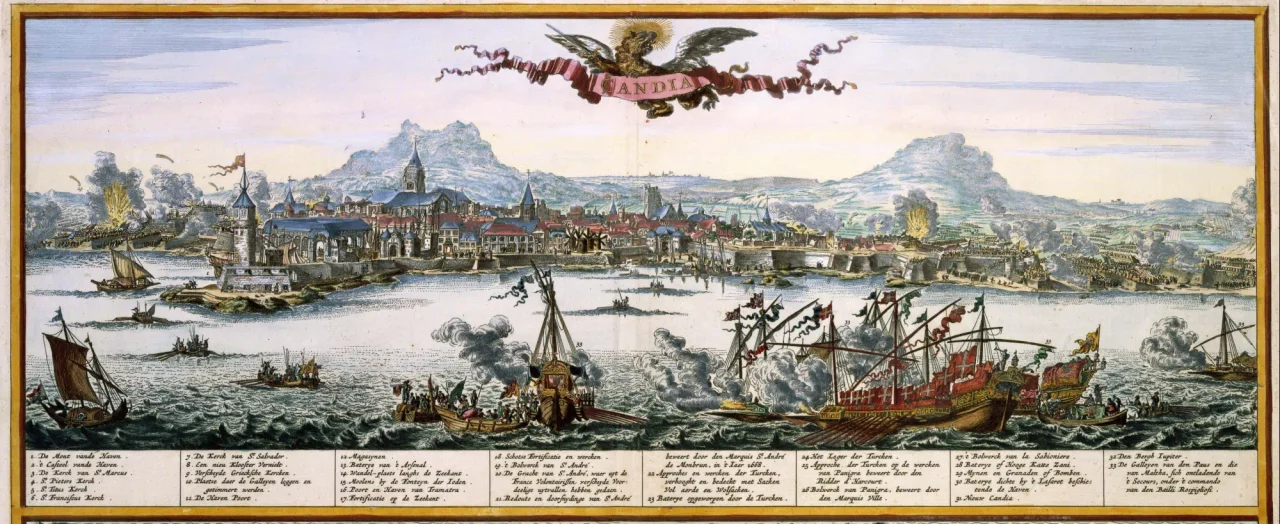
A 17th-century panoramic etching and engraving that captures a dramatic moment during the final, intense years of the Siege of Candia (1648-1669). Created by the Dutch printmaker Nicolaes Visscher I around 1668, this work served as a form of visual journalism for a European audience captivated by the epic struggle between the Republic of Venice and the Ottoman Empire.
The image is a bird’s-eye view from the sea, looking toward the heavily fortified city of Candia (modern Heraklion). It is a scene of total war, combining both a naval battle and a land siege.
Key Elements of the Scene:
- The Naval Battle (Foreground): The immediate foreground is filled with the chaos of a naval engagement. Large galleons and smaller, oared galleys are shown in fierce combat, with clouds of cannon smoke billowing from their sides. The key at the bottom, written in Dutch, identifies the various Christian fleets that came to the aid of the Venetians. It specifically points out the ships belonging to the Pope and the Knights of Malta, who were crucial allies in the defense of the city. The turbulent sea and damaged ships convey the intensity of the fight to control the city’s harbor and supply lines.
- The City of Candia (Midground): Stretching across the center of the image is the city of Candia itself, enclosed by its formidable Venetian fortifications. The artist has taken care to render the famous “star fort” design, with its massive, angular bastions and high curtain walls, which were masterpieces of Renaissance military engineering. Behind the walls, the cityscape is dense with buildings and church towers, representing the prize for which both sides were fighting.
- The Ottoman Siege (Background): On the land behind the city, the full scale of the Ottoman siege is apparent. The landscape is dotted with explosions and plumes of smoke, indicating the relentless artillery bombardment from the Ottoman siege lines. The key identifies these as the “Battery and approaches of the Turks” and the “Camp of the Turks,” showing a vast, entrenched army determined to breach the city’s defenses.
- The Informational Key: The numbered and lettered key running along the bottom of the print is a crucial feature. It turns the dramatic scene into a detailed historical document, allowing viewers to identify specific military positions, key events (like the “Shipwreck and sinking of St. Andre”), and the locations of the various forces involved. This level of detail catered to the widespread European interest in the tactics of siege warfare, for which Candia had become a famous case study.
It combines a wide, panoramic view with specific, keyed details to communicate the scale, complexity, and violence of one of the longest and most significant sieges in early modern history.
B. The Bastions Under Fire: A Narrative of Shifting Assaults
The siege can be understood as a series of distinct phases, each defined by the Ottoman focus on different sections of the fortifications.
- Phase 1 (from 1648): The Southern Assault. The Ottomans initially concentrated their attacks on the southern and southeastern fronts, targeting the most powerful bastions: Vitturi, Jesus, and the massive Martinengo Bastion. This was a strategic miscalculation, based on the erroneous belief that the higher ground outside the moat would provide an advantage. Despite fierce bombardments that damaged the Martinengo and Jesu bastions, the attacks were repulsed with extremely heavy Ottoman losses. The western Bethlehem Bastion also endured constant assaults during this period.
- Phase 2 (late 1667): The Defection and the Strategic Shift. The critical turning point in the land war came in November 1667 with the defection of a Venetian military engineer, Andrea Barozzi. He provided the Ottomans with priceless intelligence, revealing a fatal weakness in Candia’s defenses: the two seaside bastions, St. Andrew (northwest) and Sabbionara (northeast), were incomplete. They were lower than the other bastions and, crucially, were built on rocky and sandy ground, respectively, which made it impossible for the Venetian defenders to dig counter-mines beneath them.
- Phase 3 (1668-1669): The Final Breaches. Armed with Barozzi’s intelligence, the Ottomans completely revised their strategy, shifting their entire offensive to the two vulnerable seaside bastions. Relentless bombardment throughout 1668 created enormous breaches in the flanks of both the St. Andrew and Sabbionara bastions. By January 1669, the situation was catastrophic for the defenders. The Ottomans had stormed and captured the St. Andrew bastion and were flying the Janissary flag over the ruins of the Sabbionara bastion. The city’s defensive perimeter had been irrevocably broken.
C. Kal’a-ı Cedid (Inadiye): The Ottoman City Outside the Walls
The protracted nature of the siege led to the creation of a remarkable and unique structure: a permanent city for the besiegers.
- Construction and Location: Following the 1649 Janissary mutiny and the realization that the siege would be a long-term affair, the Ottomans constructed a new fortress in 1650. Located on the Fortezza hill to the south of Candia, it was named Kal’a-ı Cedid (New Fortress) or, more evocatively, Inadiye (Fortress of Obstinacy).
- Layout and Society: Inadiye quickly evolved from a military camp into a sprawling city. The central stone fortress contained 500 houses, an armory, and a mosque. This was surrounded by a vast suburb (varoş) of an estimated 77,000 temporary structures made of wood and rubbish, including more houses, 2,000 workshops, and additional mosques. This “Ottoman Candia outside Candia” became a bustling center with its own complex social life. Records from the camp’s judge show a society in formation, with numerous marriages registered between Ottoman soldiers, local Christian women, and recent Cretan converts to Islam—a microcosm of the society that would emerge after the conquest.
- Strategic Demolition: This unique city was deliberately destroyed by its creators. When Grand Vizier Köprülü Fazıl Ahmed Pasha arrived in 1667 to lead the final assault, he ordered the entire suburb to be demolished. The wood was repurposed for building siege engines and trenches. The act had a powerful psychological purpose: by destroying their homes, the soldiers were forced to live in the trenches, with “no hope to come back,” their focus narrowed to the single objective of taking the city.
The Final Assault (1667-1669): The Arrival of the Grand Vizier
The arrival of the Grand Vizier signaled the Ottoman Empire’s determination to end the costly stalemate. This final phase was marked by an unprecedented intensity of fighting and the ultimate failure of Christian Europe to save the city.
The Grand Vizier Takes Command
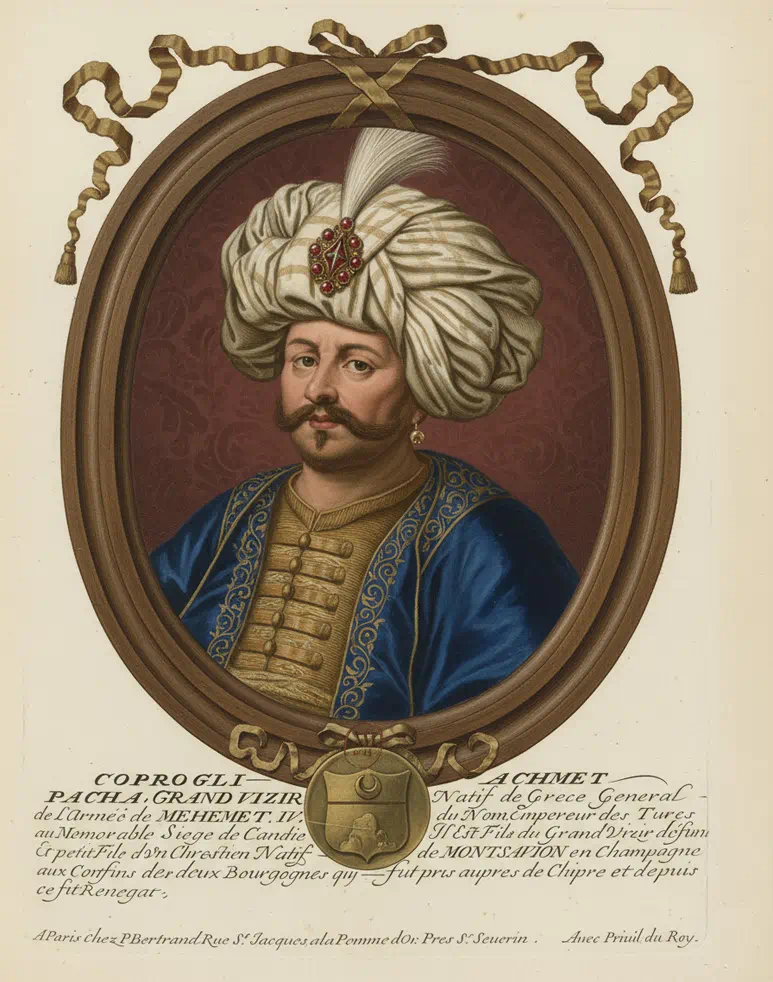
With the Ottoman-Austrian war concluded by the Treaty of Vasvar in 1664, the full might of the empire could be directed at Crete. Grand Vizier Köprülü Fazıl Ahmed Pasha, a determined and capable leader, arrived in 1666 and took personal command of the siege in May 1667, operating from the Inadiye fortress. Under his direction, the assault became relentless, employing overwhelming artillery and manpower.
The Last Crusade: The Failure of European Relief
The renewed Ottoman pressure prompted one last, desperate attempt by European powers to relieve the city. A relief force arrived in 1669, but its efforts were calamitous.
- A large French contingent, commanded by the Duc de Beaufort, launched a night sortie on June 25, 1669. The attack descended into chaos, was repulsed with heavy losses, and the Duc de Beaufort himself was killed in the fighting. The German contingent, led by the Prince of Waldeck, met a similar fate, with its commander also perishing in the fray.
- A month later, on July 24, a catastrophic blow struck the Christian forces when the French vice-flagship, the 900-ton warship La Thérèse, suffered an accidental powder magazine explosion and sank. This dual disaster shattered the morale of the defenders and the relief force. Chastened by their losses and the futility of their efforts, the French forces abandoned Candia in August 1669.
The Breach and Surrender
The departure of the French relief force sealed Candia’s fate. The Venetian commander, Francesco Morosini, was left with a garrison of only 3,600 fit men to defend a fortress whose key bastions were in ruins. Facing an overwhelming and determined enemy, with no hope of further aid, Morosini was prompted to negotiate. On September 27, 1669, he surrendered the city to the Grand Vizier, bringing one of the longest and most heroic sieges in history to an end.
Aftermath: The Cost of Candia and the New Mediterranean Order
The fall of Candia was a momentous event with profound consequences that reshaped the geopolitical landscape of the Eastern Mediterranean. The victory came at a staggering price for both sides.
The Human and Financial Cost
The 21-year siege was an unparalleled bloodbath. While precise figures are difficult to verify, contemporary estimates place Ottoman losses at an almost unbelievable 200,000 soldiers. The Christian alliance forces, including Venetian regulars, mercenaries, and European volunteers, lost nearly 30,000 men. Beyond the battlefield casualties, the war inflicted a terrible human cost through widespread enslavement and sexual violence, affecting Christian, Muslim, and Jewish populations caught in the conflict. The financial strain was equally devastating; the two-decade-long campaign nearly bankrupted the Ottoman treasury and placed an immense burden on the Venetian Republic.
The Terms of Peace (1670)
The peace negotiations that followed in 1670 formalized the transfer of power. The Venetian Republic was forced to cede almost the entirety of Crete to the Ottoman Empire. Venice was permitted to retain control of three fortified offshore islands—Grambousa, Souda, and Spinalonga—which served as strategic naval outposts, though these too would eventually fall to the Ottomans. The treaty also saw Venice lose significant territories in Dalmatia and other islands in the Aegean Sea.
Geopolitical Consequences
The conclusion of the Cretan War marked a significant shift in the balance of power. For Venice, the loss of Candia was a devastating blow to its prestige and signaled the irreversible decline of its once-mighty eastern maritime empire. For the Knights of St. John, with Candia gone, their island fortress of Malta now stood as the primary Christian frontline against Ottoman power in the central Mediterranean.
For the Ottoman Empire, the conquest of Crete was a major strategic victory, consolidating its control over the Eastern Mediterranean. However, it was a pyrrhic victory. The immense expenditure of men and money left the empire severely weakened. The conclusion of the war freed up the formidable Ottoman military machine to turn its attention westward once more, pressing against the Holy Roman Empire in Hungary. The advanced and tenacious siege techniques the Ottomans had perfected at Candia were later employed with dangerous effect during their next major European campaign. This westward push would culminate just 14 years later in the Siege of Vienna in 1683. Thus, the struggle for Candia can be seen not merely as the end of a long war, but as the direct strategic and tactical prelude to the next great confrontation that would ultimately mark the high-water mark of Ottoman expansion into Europe. The victory at Candia, achieved at such a debilitating cost, paradoxically contributed to the strategic exhaustion that would lead to the failure at Vienna.
Related material and sources
Academic Works & Journals
- Anastasopoulos, Antonis, and Elias Kolovos, eds. “A Town for the Besiegers: Social Life and Marriage in Ottoman Candia outside Candia.” In The Eastern Mediterranean under Ottoman Rule: Crete, 1645-1840. Crete University Press, 2008.
- Glozier, M. “The Long Siege of Candia (1648-69): The Knights of St John, a Venetian Protectorate, the Ottoman Empire and a Scottish Regiment.” Sydney Open Journals 18 (2019): 25–36.
- Herzig, Tamar. “Religious Conflicts, Enslavement, and Sexual Violence.” Renaissance and Reformation (2025): 143–186.
- Kaplanis, T.A. “Recording the history of the ‘Cretan War’ (1645-1669): an overview.” CAMBRIDGE PAPERS IN MODERN GREEK (2007): 91–123.
Articles & News Sources
- Agios Andreas Bastion | Heraklion Fortifications – Geotour Crete
- Bethlehem Bastion and Gate – Geotour Crete
- Candia
- Candia (Iraklion), a Venetian fortress in Greece – Rome Art Lover
- Fortifications in Crete (Part 4) – Archaeology Wiki
- Fortifications of Heraklion – Wikipedia
- Inadiye fortress – Greek Castles
- Insula Candia Ejusque Fortificatio. – Geographicus Rare Antique Maps
- Sabbionara gate – bastion, Heraklion – Geotour Crete
- Second Longest Siege in History: The (Staggering) Siege of Candia 1648-1669 – YouTube
- Siege of Candia – Wikipedia
- The City Walls Of Heraklion – Tourist Guides of Crete
- The History of Heraklion – The Castle of Candia – Cretan Beaches
- The siege of Candia Castle lasted a full 21 years… – Reddit
- Thematic sections – Κούλες, Rocca a Mare
- Travel Guide for Island Crete , Greece – Fort Inadiye (Fortezza)

